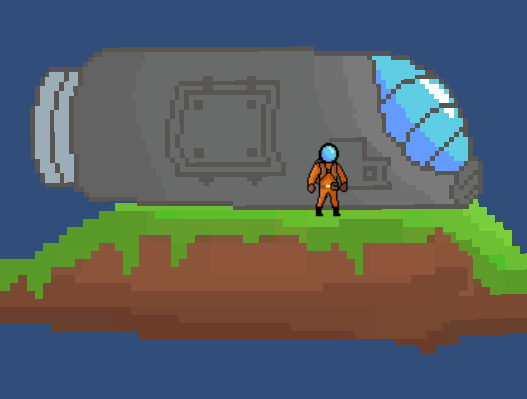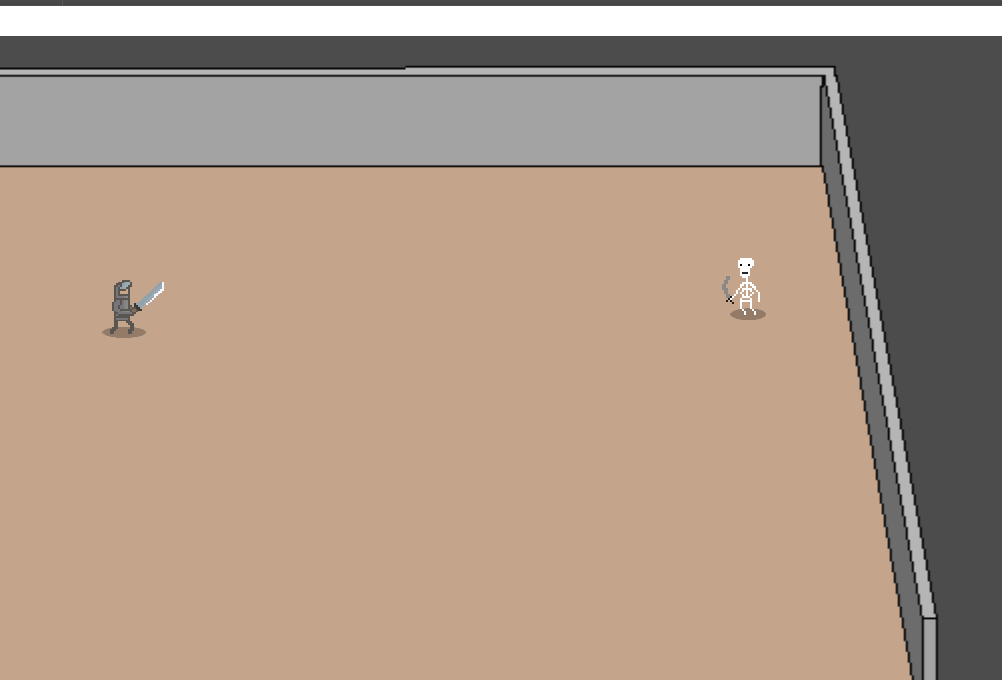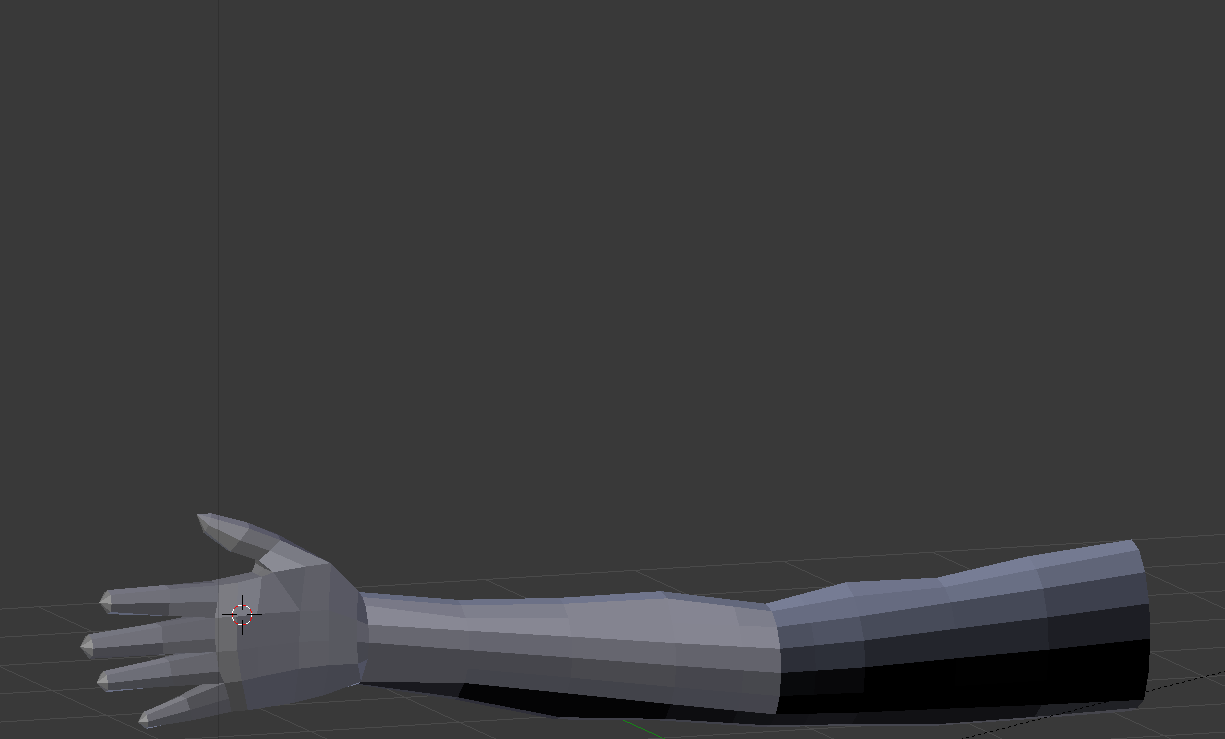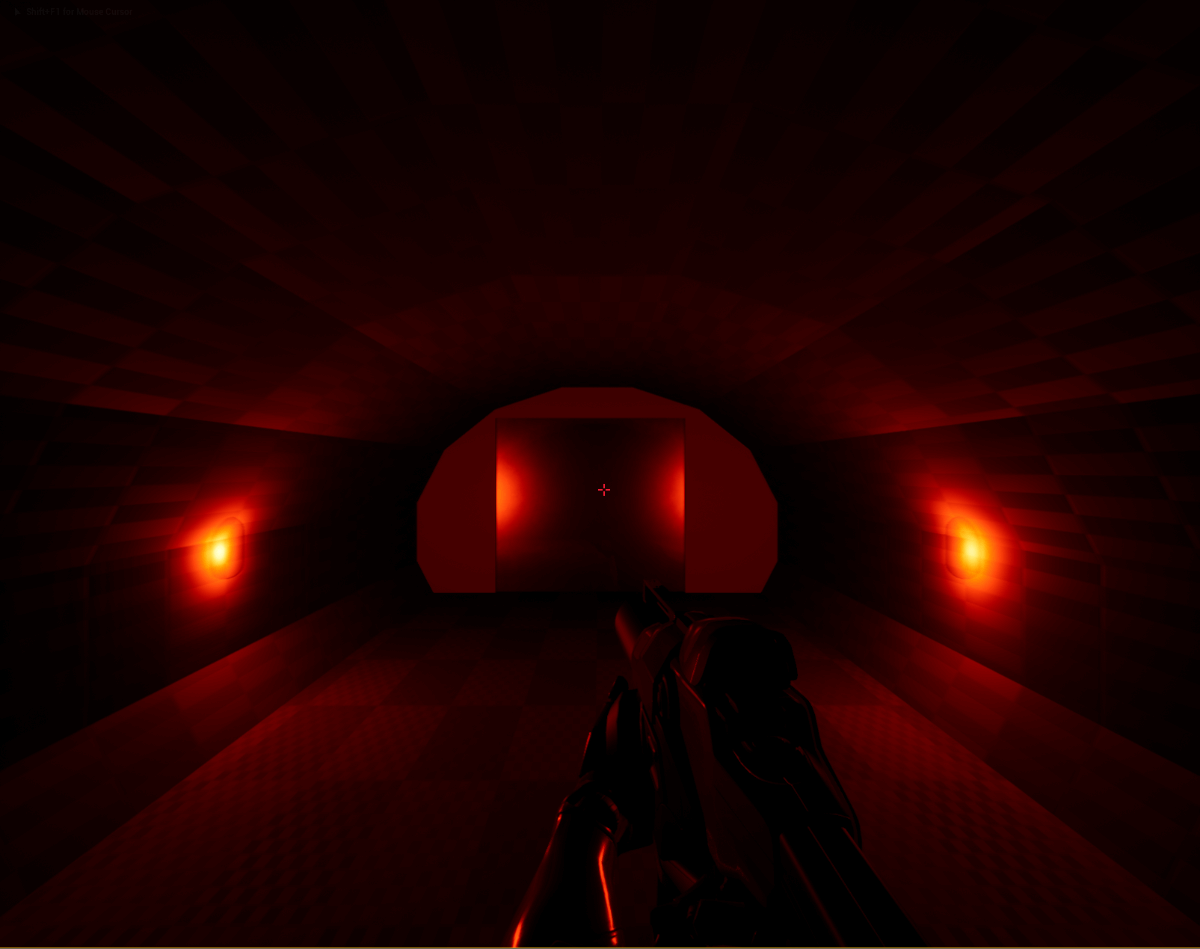I’ve been a hobbyist game dev for a few years now. I do it mostly for some fun programming outside my day job, and use it as a creative outlet. Over the last few years I’ve started and abandoned a handful of projects like any good hobbyist developer. I figured sharing some of the assets and game play that never saw the light of day could be a fun post, so here we go!
Planet Raiders
After competing in Ludum Dare 40 back in 2017, I wanted to work on my pixel art style. I was really bad at art at this point, and I wanted some practice to improve it.
Planet Raiders was my first endeavor into a game where I would focus on the art. The idea behind the game was that you would fly a ship around to various randomly generated planets, land on them, and explore to find secrets. Not that unlike my Ludum Dare 45 submission!
I spent a lot of time reading tutorials from Pedro Medeiros (He did the art for TowerFall and Celeste). I picked up a ton of tips, especially around shading.
What resulted was a huge improvement over my game Mutoid.

I still liked the pixel art style for the retro feel. However I wanted it to feel way more fluid. I didn’t get much past the basic movement implementation, which was kinda fun in a low grav style. I did however complete an animation for the ship and player movement.
 Hero
Hero
 Ship
Ship
The Pits (aka LaserDragon)
In 2018, after participating in Ludum Dare 41 I was again inspired to build a game. The Pits was my idea to build a game focused on a single easy to learn, hard to master game mechanic.
At this point I was getting comfortable with my art style. It wasn’t professional level by any means, but it was passable for indie dev purposes. I really wanted to see what kind of game I could build around a single interesting mechanic. In The Pits you were a sword wielding knight, cast into an arena (or pit) to fight off hordes of enemies.
However this was not just a 2d beat ‘em up. The twist was that you could run and pickup momentum, which if timed right with an attack would deal more damage. Since the player was in a small arena, they could time a “wall jump” off the edge of the arena to keep their momentum into the opposite direction.
 Damage output being displayed
Damage output being displayed
I really liked this concept, and still do. If tied together, you could really pickup some speed and deal massive damage. It was almost like watching a pinball bounce around if you could time the jumps right.
However if you messed up the timing, you would just kinda hit the wall and fall flat.

I even had a first intro enemy, a skeleton, planned and roughly drawn with some animations.

In the game’s abandoned state, the skeleton moves and attacks the player. The player can die and also can kill the skeleton.

Unfortunately I didn’t get much further than that. I think the concept was really cool, and had some promise. It was a good exercise in exploring a single game mechanic, and I hope that one day I can expand on what I learned.
And here’s something a little extra… I found this guy titled “carter” in the concepts folder for this game. No idea what he was going to be, I can only suspect he’d have been pushing some kind of cart!
 Carter
Carter
Beyond Reality
Back in the late 2000’s (~2009), I was heavy into the source engine mod scene (especially level design). With some friends, I had started a mod called Beyond Reality. It unfortunately never saw the light of day outside of a public demo. However, in mid-2019, I started experimenting with a reboot of the idea.
This began my first dive into 3d game development. Historically I have stayed away from 3d due to the increased demand in assets. I’m not one to use things from the asset store, and the work to model, texture, rig, and animate is tremendous even for a small project.
Beyond Reality was a relatively simple idea. The player was thrust into an underground facility filled with supernatural baddies. Inspired by Eternal Darkness, the player would be subject to insane hallucinations.
I had a few neat twists planned. First of all, losing sanity and hallucinating could be advantageous. For example, you could hallucinate that a side door exists that cuts through part of the level. By hallucinating long enough to make it through the shortcut, you could then regain sanity and essentially skip part of the level. However, If you regained sanity before you were all the way through then you would re-appear at the start of the “shortcut” and there would be no door there at all. Being insane would come at the cost of lower overall health and more frequent enemy encounters.
The game was also set to feature a creature that would stalk the player from the shadows for most of the game, similar to Resident Evil 3: Nemesis. Initially starting as just a few “corner of the eye” encounters, the player would eventually be forced to get creative to evade death. Lower sanity would increase the chance of the creature appearing, and each level would have a timer that would trigger the creature automatically after expiring.
This combination would force the player to balance being sane enough to not be killed by the creature, while also using insanity to their advantage to find secrets or solve puzzles.
There were a handful of dark moments planned for this game, including the ability for the player to cut themselves to lower their sanity rating. It was gonna be a dark one!
As I had suspected, 3d just wasn’t for me. The effort for such small details was just too huge, and I wasn’t a big fan of the blueprint system in Unreal. I did complete a couple of basic models and textures, including a flashlight and a fully rigged arm for the player’s hands.

I also built a small concept level, mostly feeling out the way mapping worked in Unreal.

In the end, I really disliked the mapping flow in Unreal. I was totally spoiled by Valve’s Hammer editor and the effort of building static meshes didn’t jive well. That combined with the overhead of 3d modeling and disliking the Unreal blueprint system brought the project to a close.
As with most of my ideas, I still really like this one. If I ever return to 3d game development, this one is at the top of my list.
Moving Forward
I will continue to build games that I never finish. It’s just a hobby for me and it’s supposed to be fun before anything else. I have a lot more game ideas floating around, so I’m sure another one of these posts will be due in a year or so!